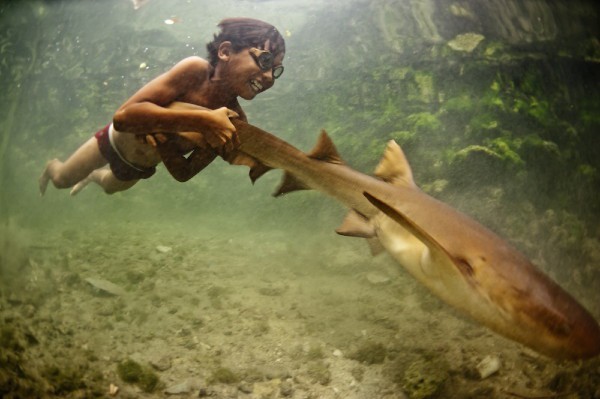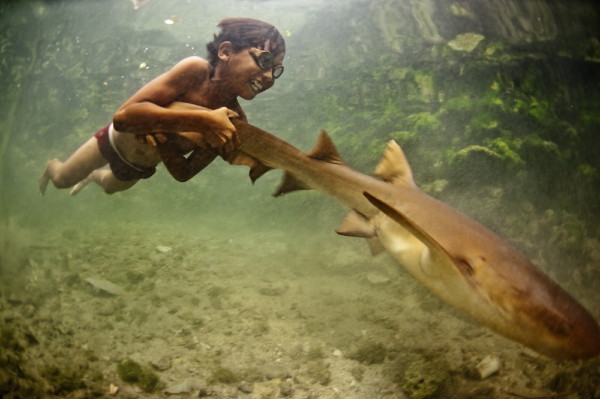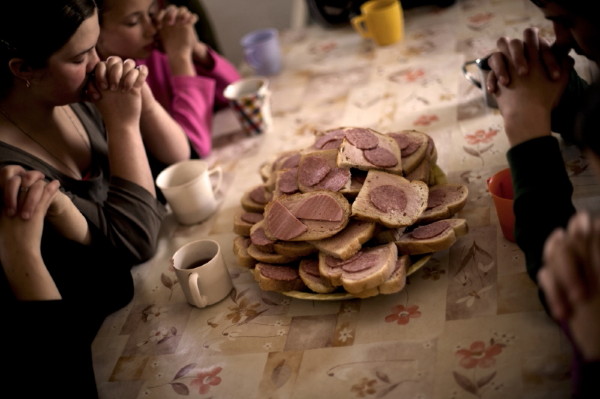Share
Getting Photographers and Non Profits Together
Over the past few weeks we’ve shared stories on the power of photography, and photographers, to help non-profit organizations achieve their missi...

Over the past few weeks we’ve shared stories on the power of photography, and photographers, to help non-profit organizations achieve their missions. We shared stories and images from worthy causes and hope that along the way you’ve gotten some ideas and maybe a little inspiration on how you can use your photography to help non-profits in your area.
In our final installment of the Photo Philanthropy series, we thought it only appropriate to go to the experts, PhotoPhilanthropy.org. This organization works to connect photographers with the charities using photography to fulfill their mission. They also run the Activist Awards which recognize photographers for their contributions to non-profit causes. We had the chance to chat with PhotoPhilanthropy’s Activist Award Director, Kathleen Hennessy. She shared some photos from the contest winners and finalists, and told us more about how PhotoPhilanthropy.org is helping photographers and non-profits alike.

photo by James Morgan on behalf of the World Wildlife Fund
When did PhotoPhilanthropy begin and what is your core mission?
The idea came about in early 2009, and got off the ground with the announcement of the first Activist Award (see below) in May 2009. Our Mission is to promote and connect photographers with non-profit organizations around the world to tell the stories that drive action for social change.
Where did the idea come from?
Founder Nancy Farese has been doing work for non-profits around the world for a number of years, and was shooting for the International Rescue Committee in Kenya when it really struck her that so many organizations she encountered were toiling in obscurity, struggling to tell their stories and keep funding flowing.
So she created PhotoPhilanthropy to link photographers with nonprofits in need of exposure, and to improve non-profit effectiveness through the use of powerful images.
Since your launch have you seen more photographer interest in Philanthropy?
Yes, we had a 25% increase in submissions to the Activist Awards this year over last year.

photo by Fernando Moleres on behalf of TIMAP for JUSTICE
What are the Activist Awards? What is the goal of the Awards?
The annual Activist Awards identify outstanding work done by photographers in collaboration with non-profit organizations worldwide and award prizes ranging from $1000-$15,000. Each photographer whose work is accepted is promoted through our website and exposed to a growing audience of concerned and committed global citizens. The award honors professional, amateur, and student photographers, and community-based organizations.
Over the two years of submissions since its inception, we have received work from 81 countries representing the work of 405 non-profit organizations! The goal is to create awareness of the great work non-profits are doing and effect social change through that awareness.
You have pro, amateur, and student categories in the contest, which did you receive most submissions in?
Professional, but we had the biggest increase from amateurs.
You just announced your winners, can you tell us a bit about what made the winning project stand out?
We had a fabulous panel of judges and we had a live judging event over 1.5 days. The judges were not only looking for quality of the images but who was best able to tell the story of their partnering non-profit through the images, and who was best able to get their story used and told.
 photo by Gyula Sopronyi on behalf of the Foundation for the Future of the Carpathian-basin
photo by Gyula Sopronyi on behalf of the Foundation for the Future of the Carpathian-basin
There are several cash prizes awarded. Are those meant to support causes or photographers? Can you explain a bit about that?
The prizes themselves support the photographers but the photographs support the non-profit by getting their story out in a powerful way. With the photographs our goal is to create awareness of the work the non-profits are doing and the need that exists.
You have 405 organizations represented in your Connections database, how do non-profits get listed on your site?
The 405 organizations are those on whose behalf a story has been submitted to the Award. In addition, non-profits may submit a profile to our site that expresses interest in working with a photographer. Several organizations have found photographers this way, and vice versa (several photographers have found projects).

photo by Zishaan Akbar Latif for Ambuja Cement Foundation (ACF)
Working with so many different organizations, are there any trends you see in photo philanthropy? Any underserved areas of need?
We would love to see more environmental essays. We notice that more people are engaging with us on FB & Twitter, and using those tools to get their stories out. Also, new opportunities for crowd funding and for citizen journalism are coming up all of the time as alternative ways to bring resources to photographers. Our partner, Demotix, offers a 50/50 revenue share with photographers for work sold through their site.
What are some of the stand out members of your community you’d like to give a shout?
Kathleen shared a few testimonials from some of the organizations PhotoPhilanthropy has worked with and the positive outcomes of those collaborations.
Stuart Freedman Photographs the work of Handicap International to affect Lebanese Policy Change
“Handicap International prides itself on having collaborated with Stuart Freedman on several occasions, the last one to date being his reportage in south Lebanon in 2007 that resulted in a book and an exhibition, both titled ‘Clearing for Peace’. We have granted Stuart Freedman permission to use freely the outcome of this collaboration, hoping that this fantastic body of work receives as much recognition as possible.
Stuart Freedman’s photographic work about the cluster munition issue in south Lebanon has been instrumental for us to lobby decision-makers, diplomats and governmental authorities so that they decide to ban these weapons. The exhibition has traveled to major cities of the world, when and where international negotiations on cluster munitions took place. On such occasions, the book was also distributed to the people involved in the discussions and to media representatives. This series of international conferences came to a conclusion in Oslo on 3 December 2008, when an international treaty banning cluster munitions was signed.”Sylvain Ogier
External communications Manager
Handicap International
Cambodia with Love, a Project by Tim Bowman
Making a change with photography may not be easy, but it sure is worth it. My work with Who Will Village resulted in the development of Cambodia with Love, a photography book with one hundred percent of sales going toward caring for kids in need.
After years of photography the vast majority of my photos did little more than clog up a few hard drives and provide friends with Facebook profile pictures. I wanted my photos to mean something. I wanted to improve my photography by shooting something WORTH capturing. I sent out emails to a few NGO’s in South East Asia and eventually came across Who Will Village via a friend. She had an idea of making a photography book, which sounded great to me. I went over to Who Will, 45km north west of Phnom Penh. When I arrived I thought, “There is no way I will get enough shots for an exhibition (20 images), let alone a book (200). There’s not enough here”. However, after a few days I began to understand Who Will is not about the place, it’s about the people.
Jodi and Tristan Moss in Guatemala with Peer Water Exchange
“Small-scale projects tailored to the needs of the locals and eventually owned and adopted by the community are the key to solving the water crisis.” said Peer Water Exchange (PWX) architect, Rajesh Shah. “The decentralized collaborative network model of PWX will help solve the world’s water crisis and we are extremely grateful to PhotoPhilanthropy volunteers who beautifully document and share the good work and results happening in remote places throughout the world.”
To read more about this collaboration, visit peerwater.org
For more information, please visit the following links:
• Jodi and Tristan visit Kalampatzom
• Jodi and Tristan visit the Janlay School
• Blue Planet Network
photo by Josh Meltzer on behalf of American Hands Aiding Latin American Youth (AHALA)
How can photographers use to PhotoPhilanthropy to get involved or start their own projects?
Photographers can find projects among our non-profit listings, here. If they are in New York, or interested in a project there, they can register themselves with our partner organization, Catch A Fire, which connects skilled volunteers with projects.
Our project template for photo essays is here. On our website, within the Resources section, photographers can find funding opportunities, and tips for working with NGOs. Once they have done a project, they can learn about ways to get their stories out there in the world, and their partner organization can learn about ways to best leverage terrific imagery.


